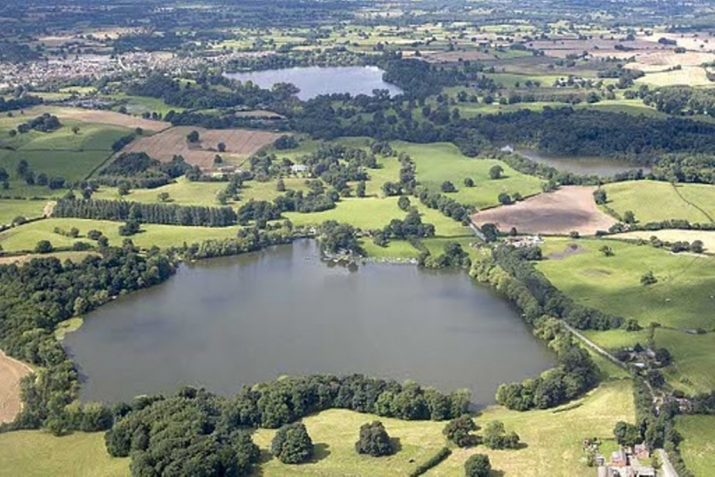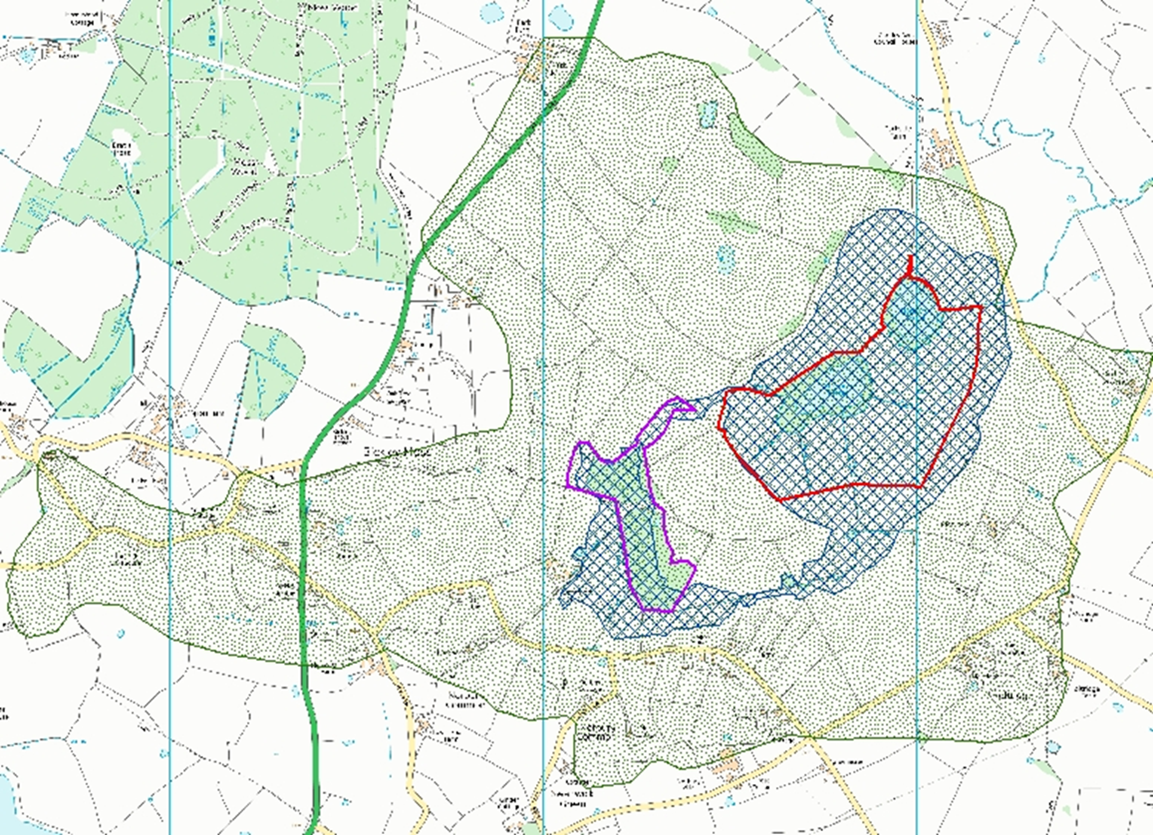
Making Space for Nature, the review of nature conservation in England completed by Professor Sir John Lawton, advocates a landscape-scale approach to conservation, to create “a coherent and resilient ecological network”, guided by 4 key principles, summarised as “more, bigger, better and joined”. At face value these principles make perfect sense, but their applicability to specific landscapes needs careful consideration. This article summarises application to the Meres & Mosses and explores what the required step change might entail.
The Meres & Mosses Landscape
The Meres & Mosses is a unique and internationally important landscape stretching across Cheshire, west Staffordshire, north Shropshire and the Welsh borders. Understanding its formation is key to taking forward its conservation.
Geological History
The Meres & Mosses is a wetland landscape created at the end of the last Ice Age. It formed in the sand and gravel dominated moraine that marked the southern extent of glaciation. As the ice sheets retreated, massive blocks of ice fell from the glaciers into the moraine. Eventually these melted, leaving water-filled basins known as 'kettle holes'. The deepest of these survive even today as open waterbodies – the meres. The mosses formed over subsequent millennia in the shallower basins, where successional processes and peat accumulation culminated in lowland raised bog formation.
Human History
Subsequent human exploitation and intensification of land use has significantly impacted these sites. However, having formed in basins, complete drainage of the wetlands has generally proved impossible, such that some semblance of wetland, although 'squeezed' and compromised, survives in many locations.
The Lawton Principles
This history has an important bearing on the applicability of the Lawton principles.
- MORE – As the Meres and Mosses are the product of specific geological processes, arguably it is not possible to create more in terms of number of sites.
- JOINED – Generally discussion around connectivity implies habitat fragmentation has occurred. However, in terms of the Meres & Mosses, while sites tend to be clustered in the landscape, geologically and hydrologically they have been isolated from one another for millennia – individual sites have become increasingly compromised rather than extensive areas of linking habitat lost.
With a resource that is effectively finite and fixed, it is the other of Lawton's principles that must drive conservation in the Meres & Mosses.
- BETTER – Given the distinct clustering of sites and the fact that wetland species tend to disperse better than other groups, the Meres & Mosses should be able to form an effective ecological network capable of supporting long-term species survival. However, the majority of sites (including many that are designated) have been compromised, their sub-optimal condition meaning they are unable to support sufficient biodiversity to sustain effective meta-populations. Consequently the major conservation driver becomes improving the quality of all extant sites across the landscape.
- BIGGER – The physical extent of the meres and mosses is limited by a specific combination of topography and geology. However, through drainage and habitat destruction, the majority of sites have been 'squeezed' to a relict wetland core. While it may not be possible to increase the physical size of sites, we can look to increase size in terms of ecological function. Habitat restoration on land adjacent to the core brings the prospect of achieving more natural hydrological regimes and the extension of associated wetland habitat mosaics. In association with this, greater acknowledgement of the relationship between a mere or moss and the catchment within which it sits is required to safeguard against external impacts.
A Step Change in Nature Conservation
While the Meres & Mosses landscape has seen significant conservation action over recent decades, in line with Lawton's findings this has been insufficient – sites continue to deteriorate and species be lost. So what needs to be done differently?
In simple terms the answer lies in scale of ambition. At the centre of this a re-definition of sites is required, no longer thinking about the extent of remaining habitat or a boundary drawn for designation purposes. Instead we should be thinking about what might be called “Functional Ecological Units”.
Figure 1 (right): A potential "Functional Ecological Unit" with current designations in red/pink, the FEU in blue and its associated catchment in green.

Defined on the basis of topography, hydrology, and surface geology, these units should comprise two elements:-
- At the core should be a high quality wetland mosaic – not just a mere or moss, but also the full range of associated wetland habitats that might be expected. As large as practicable, the hydrology should be stable, allowing natural processes (e.g. peat formation) to occur where possible, and habitats and ecological niches to be sustained.
- This ‘core’ then needs to be contextualised within the landscape, primarily relating to the catchment (surface water and groundwater) that feeds the wetland mosaic. While intensive land use between the meres and mosses is likely to continue, its impact, particularly in terms of water quality, must be mitigated to safeguard the core.
There are significant challenges associated with such an approach - How is activity prioritised and what do new ambitious targets look like?; How do we resource this re-vitalised landscape?; How do we meaningfully communicate these concepts to ensure wider society buy-in? But only by overcoming these challenges and up-scaling our ambition can we deliver the “coherent and resilient ecological network” that will secure a future for the unique and fascinating landscape that is the Meres & Mosses.
For a fuller exploration of the ideas outlined above and more about the Landscape of the Meres and Mosses - take a look at the dedicated website and download a copy of the British Widlife Article